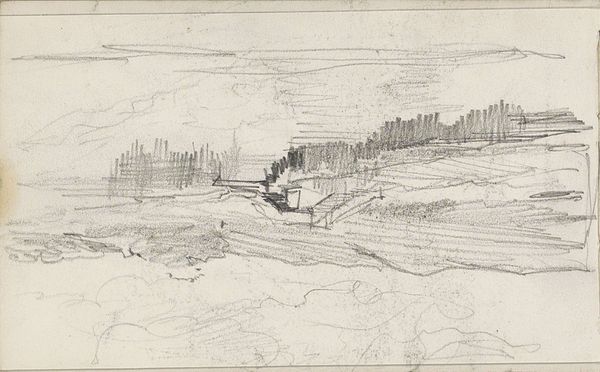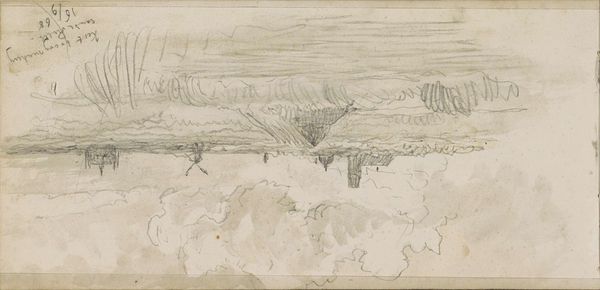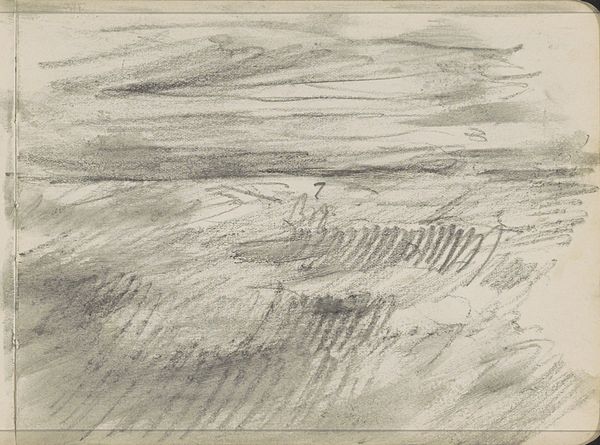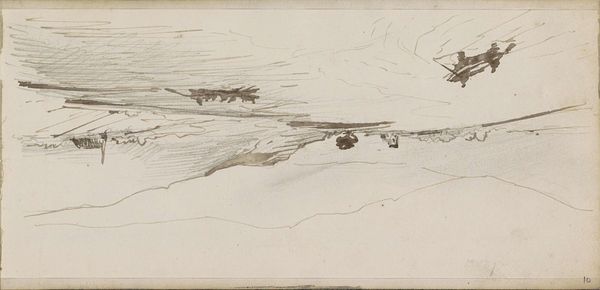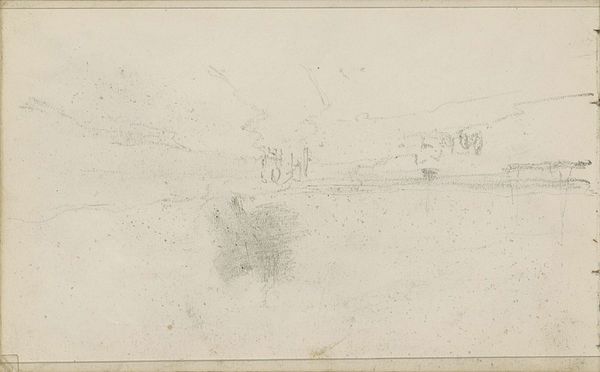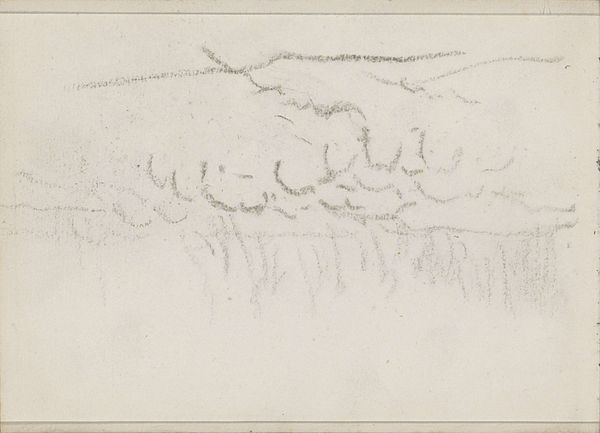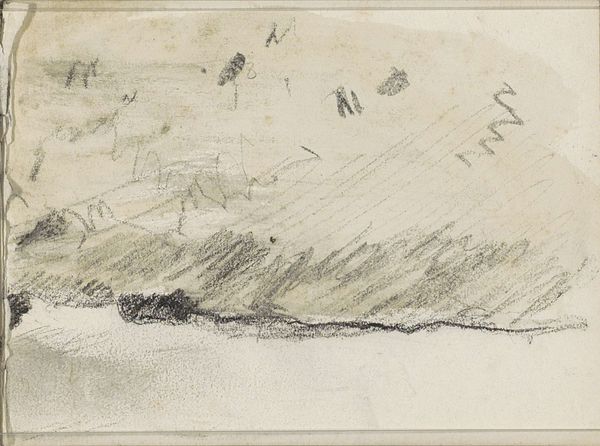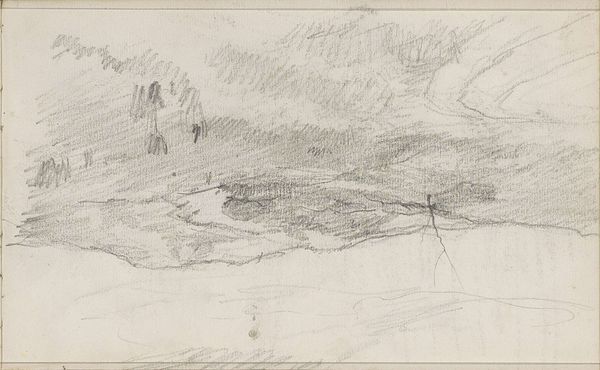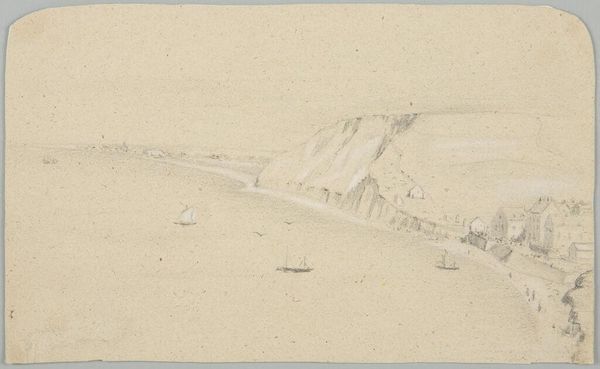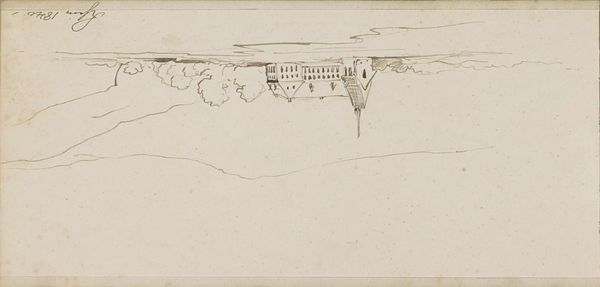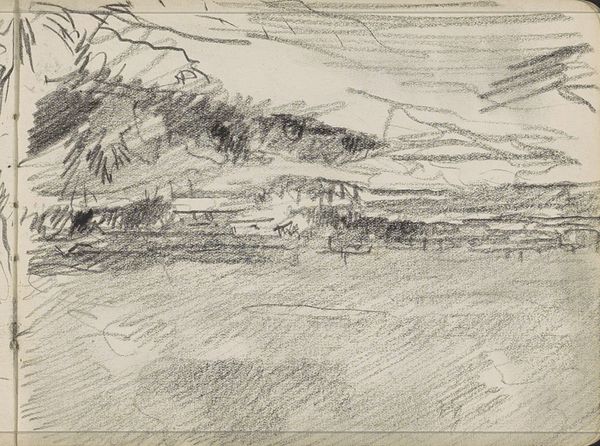
drawing, pencil
#
drawing
#
landscape
#
etching
#
romanticism
#
mountain
#
pencil
#
realism
Copyright: Rijks Museum: Open Domain
Editor: So this is Johannes Tavenraat's "Mountain Landscape with a River and Water Wheel in Thuringen", made around 1840, with pencil and etching. It feels… unfinished almost? Stark and kind of empty, but precise at the same time. What do you see in this piece, particularly considering its historical moment? Curator: Well, on the surface, it appears to be a rather straightforward Romantic landscape. However, considering the socio-political landscape of the 1840s, particularly in Germany, I see a subtle commentary on the changing relationship between humans and nature. Notice how the water wheel, a symbol of early industrialization, is dwarfed by the mountains. Is this a celebration of progress or a quiet lament for what's being lost? Editor: I didn’t even think about it in terms of industrialization! I guess I was just seeing pretty scenery. So, the choice of Thuringen isn’t accidental? Curator: Precisely. Thuringen, at the time, was a region undergoing significant economic shifts. Tavenraat, consciously or not, is placing this emblem of progress within a specific cultural context. He invites us to reflect on who benefits and who bears the brunt of these "advancements". Is the sublimity of nature being exploited for human gain, reflecting perhaps, the social stratifications of labor? Editor: So you’re saying it is not just a nice landscape drawing but also a commentary on social changes? Curator: Absolutely. And that the choice of medium – etching and pencil – adds to this dialogue. It lacks the bombast of oil paint, almost mirroring the subtle encroachment of industry. By understanding this historical backdrop, we see how even seemingly idyllic landscapes participate in broader discourses around identity, place, and power. What’s your impression now? Editor: That changes my whole understanding. I will definitely look at landscapes differently, thinking about who is in the picture, but also, who is missing. Thank you! Curator: My pleasure. And remember, art history isn't about static objects, but about the ever-evolving dialogues they inspire.
Comments
No comments
Be the first to comment and join the conversation on the ultimate creative platform.

